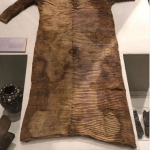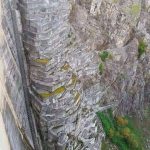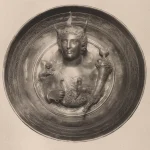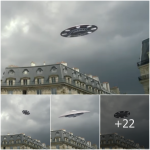Walter Hege, 1928–1930, Acropolis, Athens, Greece (Erechtheion, Caryatid Porch Front View).

The photograph titled “The Acropolis, Athens, Greece (Erechtheion, Caryatid Porch Front View)” by Walter Hege, taken between 1928 and 1930, is a remarkable representation of one of the most iconic structures in ancient Greek architecture. This image captures the grandeur and intricate detail of the Erechtheion, particularly the famous Caryatid Porch, showcasing both the artistic and architectural brilliance of classical Greece and the photographic skill of Hege.
The Acropolis of Athens stands as a testament to the cultural and historical legacy of ancient Greece. It is home to several significant structures, with the Erechtheion being one of the most revered. Constructed between 421 and 406 BCE, the Erechtheion was dedicated to both Athena and Poseidon, reflecting the rich mythological heritage of the city. The Caryatid Porch, or Porch of the Maidens, is perhaps its most distinctive feature, with six draped female figures (Caryatids) serving as architectural supports in place of traditional columns.
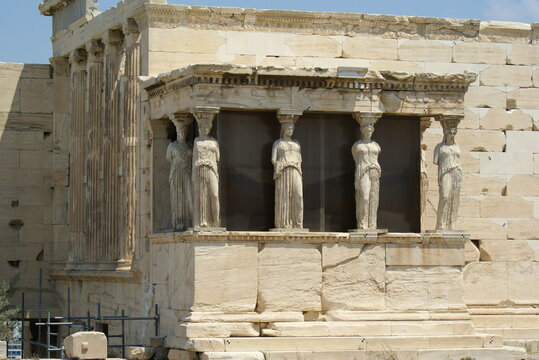
Walter Hege, a renowned German photographer, was particularly adept at capturing the essence of classical architecture through his lens. His work in the late 1920s and early 1930s involved photographing ancient Greek ruins with a focus on their aesthetic and historical significance. Hege’s photograph of the Caryatid Porch is not merely a documentation but an artistic interpretation that highlights the elegance and harmony of the Erechtheion’s design.
The Caryatids themselves are a masterpiece of ancient Greek sculpture. Each figure is meticulously carved, with detailed drapery that falls naturally, creating a sense of both strength and grace. They stand in a contrapposto stance, which gives them a dynamic and lifelike appearance. The precision in their design and execution reflects the high level of craftsmanship and artistry that ancient Greek sculptors possessed.

Hege’s photograph captures this artistry with remarkable clarity. The frontal view emphasizes the symmetry and balance of the Porch, allowing viewers to appreciate the harmonious proportions and the intricate details of the Caryatids’ attire and hairstyles. The play of light and shadow in the photograph enhances the three-dimensional quality of the figures, bringing out the depth and texture of the marble.
Moreover, this photograph serves as an important historical record. Taken in the early 20th century, it documents the state of the Erechtheion before further restoration and conservation efforts were undertaken. It provides valuable insight into the preservation challenges faced by such ancient monuments and the efforts required to maintain their integrity over the centuries.
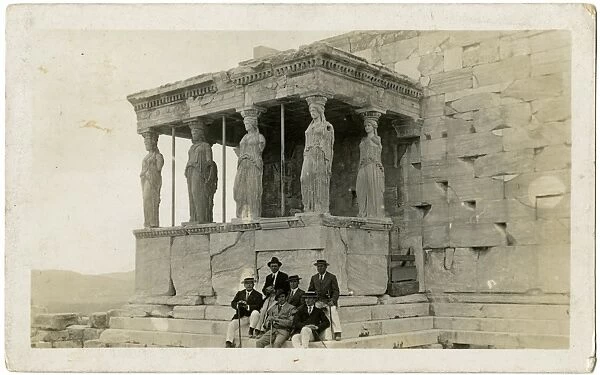
Hege’s work also contributes to our understanding of the cultural significance of the Acropolis and its monuments. By capturing these structures in such detail, he helps to convey the importance of the Acropolis as a symbol of ancient Greek civilization and its enduring influence on Western culture. The Erechtheion, with its unique architectural features and mythological associations, exemplifies the blend of religious, cultural, and artistic elements that define ancient Greek heritage.
In conclusion, “The Acropolis, Athens, Greece (Erechtheion, Caryatid Porch Front View)” by Walter Hege is more than just a photograph; it is a window into the artistic and architectural genius of ancient Greece. Through Hege’s lens, we are able to appreciate the beauty and craftsmanship of the Caryatid Porch, while also gaining a deeper understanding of the historical and cultural significance of the Acropolis. This image stands as a tribute to the enduring legacy of classical architecture and the timeless appeal of ancient Greek art.

